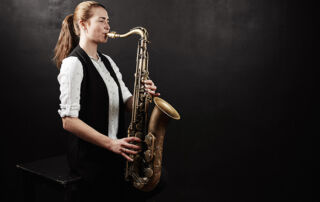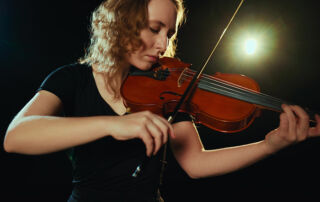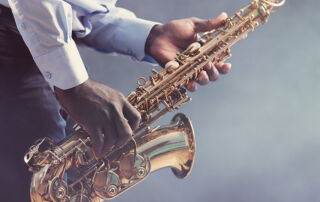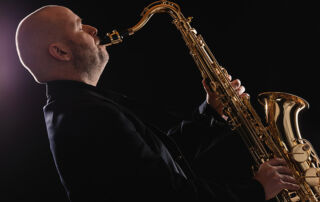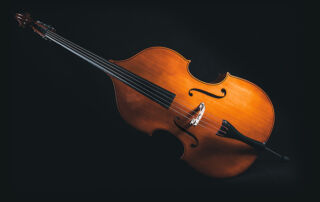
The History
The history of the viola dates back to the creation of the violin family in 16th-century Italy.
It is descended from the rebec, a type of flat, three-stringed cello that accompanied troubadours on their travels.
The oldest surviving models are two relatively large violas crafted by the luthier Gasparo da Salò.
It was widely used in the early 17th century. Initially, two instruments were distinguished: the tenor viola (tenore viola) and the viola proper (alto viola), both of which had the overall definitive shape of the viola as we know it today.
The tenor viola (tenore viola) disappeared in the 17th century due to playability issues. Its weight and size made it less suitable for virtuosic playing compared to the violin or cello, creating writing constraints that were difficult for composers of string quartets to accommodate.
The alto viola spread throughout Europe and corresponds to the instrument we know today.
However, the alto viola was not optimal and underwent improvements between the Baroque and Classical periods. The neck was lengthened and slimmed down to enhance playing comfort and better access the higher register.
The chin rest also made its appearance, further enabling the growing virtuosity of the musician.
Many countries refer to it as the viola, but others, like France, prefer to refer to its range, which is why French speakers call it "alto."
Widely used in early works such as Orfeo (1607), the opera by Claudio Monteverdi, the viola fell into the background at the end of the 17th century and during the 18th century, when smaller models were preferred.
With the revival of the viola in compositions such as Harold in Italy (1834), a symphony for viola and orchestra by Hector Berlioz, and solo works by Brahms and Schumann, larger violas returned to prominence.
The viola was regarded as an accompaniment instrument in chamber orchestras (where its warm tone is highly valued) and string quartets until the 20th century, a period during which its solo repertoire expanded significantly.
Today, it is very rare to find authentic Baroque instruments, as the vast majority were "modernised" in the 19th century.
As the craft of instrument making became industrialised with the advent of mass production, the modernised viola became the new standard.
For a long time, the viola was not considered a standalone instrument requiring distinct training from the violin. The first viola class was established a century after the founding of the Conservatoire National de Musique, despite Hector Berlioz having called for it 47 years earlier.

Technique
The viola is a member of the violin family, played resting on the left shoulder and held in place with the chin.
It has four strings tuned in fifths: C (the lowest), G, D, and A. Between two and seven centimetres longer than the violin and tuned a fifth lower, the viola comes in more varied sizes than the violin or cello.
Strings were previously made of gut but are now made of steel. Gut strings produce a richer and warmer sound but are more difficult to keep in tune as they are highly sensitive to humidity.
The bridge (a piece of maple wood) is located between the strings and the soundboard.
It transmits the vibrational waves from the strings to the soundboard, which then amplifies the generated sound wave.
The bridge also serves to maintain the spacing between the strings and keep them at the correct height relative to it.
The tailpiece is a component made of plastic, ebony, boxwood, or rosewood that holds the strings in place.
It is attached to the instrument’s button by a tailgut. The soundpost is a small cylindrical piece of wood inserted inside the instrument’s body, enabling sound amplification.
The soundpost connects the two plates and transmits vibrations from the soundboard to the back plate. The sound is then projected out of the instrument through the f-holes.
The f-holes are two openings carved into the soundboard of the viola, allowing the sound to escape from the instrument. They are symmetrically positioned on either side of the central axis formed by the strings.
The viola is made up of three parts: the scroll or head, the neck, and the resonance body.
- The headstock or scroll, or volute, is shaped like a spiral. Holes are drilled into it to hold the pegs, which are used to tighten or loosen the strings to tune the instrument.
- The neck, made of maple in contrast to the rest of the viola, is unvarnished. The four strings run across it.
- The fingerboard, the black part placed on the neck, is made of very solid wood (ebony) to withstand the constant tapping of the musician’s fingers.
The viola is played with a bow that is drawn across the strings, hence the term "bowed string instrument." However, it can also be played pizzicato, meaning with the fingers of the right hand.
A bow is a wooden stick with a horsehair ribbon attached to it. Its name comes from its resemblance to a bow (it was once shaped like a bow).
The friction of the horsehair on the strings creates a vibration, producing a sound that is amplified by the body of the instrument.
The bow consists of several parts: the stick, the horsehair, the frog (a piece that adjusts the tension of the horsehair with a screw), a tip plate (which protects the tip of the bow from impact), and a small piece called the "wrapping," placed inside the frog to conceal the horsehair within it.
Here are some playing techniques used by violists:
- With the right hand without the bow: pizzicato, which involves plucking the strings.
- With the bow: tremolos, staccato, detached notes, legato, col legno (playing with the wood of the bow), and sul ponticello (playing near the bridge).

